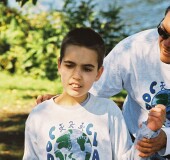
WEDNESDAY, Nov. 20, 2013 (HealthDay News) — Neurons in the area of the brain responsible for face recognition respond differently in people with autism than in those without the disorder, a new, small study finds.
Autism is a complex disorder of brain development that affects social interactions, communication skills and behaviors.
For this study, published in the Nov. 20 issue of the journal Neuron, brain scientists collaborated to decipher why people with autism focus more on someone’s mouth and less on the eyes to collect and process information.
The researchers examined the firing of individual nerve cells in the brains of two patients with a high-functioning form of autism and in people without autism as they looked at pictures of entire faces or parts of faces. Each face showed either fear or happiness, and the participants were asked to decide which emotion was being expressed.
The results showed that a specific type of neuron in the brain’s amygdala performed differently in the autism patients than in those without the disorder.
In the amygdala — which is important for emotional memory — certain neurons fire when a person looks at a whole face, while other neurons are activated when a person looks at parts of faces or certain facial features such as an eye or mouth.
In the two patients with autism, “whole-face” neurons responded appropriately, but the “face-part” neurons were much more active when the patients were shown the mouth region compared to when they were shown the eyes, the researchers found.
“Many studies have found that people who have autism fail to focus on the eye region of others to gather social cues and process information about emotions,” study first author Ueli Rutishauser, director of human neurophysiology research at Cedars-Sinai Medical Center, said in a center news release.
“The amygdala — which is critical for face recognition and processing of emotions — is thought to be one of the principal areas where dysfunction occurs, but this is the first time single neurons in the structure have been recorded and analyzed in patients with autism,” Rutishauser said.
The study offers new insights into mechanisms underlying the symptoms of autism and opens the door for further studies, said senior author Ralph Adolphs, a professor of psychology and neuroscience at Caltech, the California Institute of technology, in Pasadena.
“Are there genetic mutations that lead to changes in this one population of neurons? Do the cell abnormalities originate in the amygdala or are they the result of processing abnormalities elsewhere in the brain?” Adolphs said.
Many questions remain unanswered, “but this study points us in a specific direction that we believe will help understand autism,” he said in the news release.
More information
The U.S. National Institute of Neurological Disorders and Stroke has more about autism.
Copyright © 2025 HealthDay. All rights reserved.

